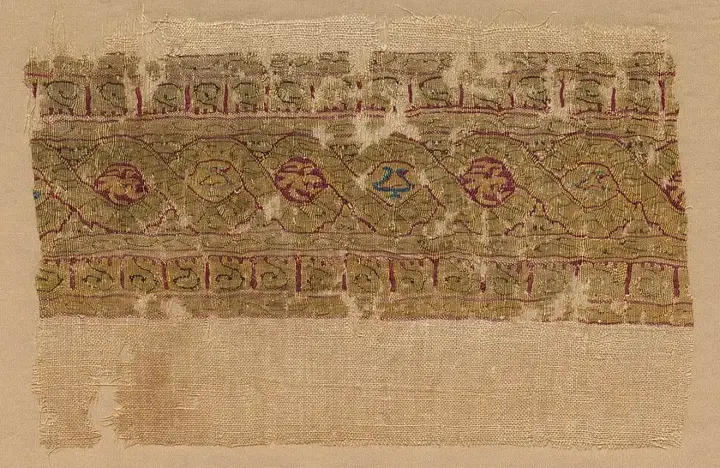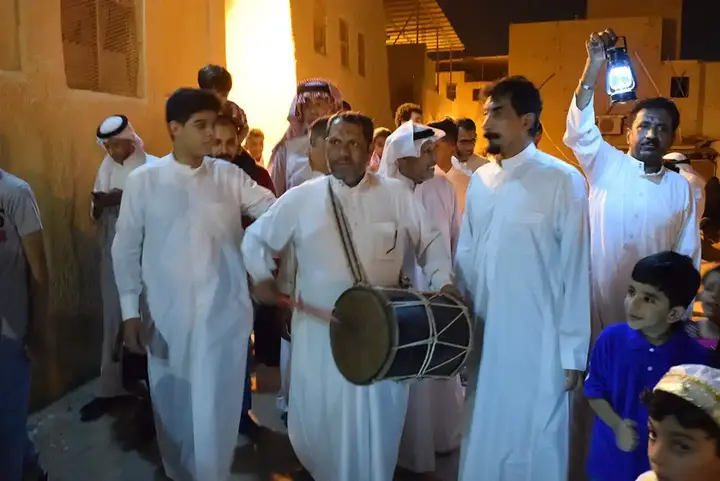The most famous Fatimid customs in Egypt until today

Deep in Egyptian history, customs and traditions tell ancient stories and are full of Fatimid culture and heritage. Since the Fatimid state was founded in Egypt in the tenth century, it has influenced people's lives and left its deep mark that coexisted and harmonized with the popular and religious customs of Egyptians.
Show key points
- The Fatimid dynasty left a lasting cultural and spiritual legacy in Egypt, blending seamlessly with both popular and religious traditions.
- Lanterns, introduced during Fatimid rule, became symbolic during Ramadan, representing joy and spiritual guidance, and are still widely used today.
- The tradition of the Mesaharati, who woke people for Suhoor during Ramadan by beating a drum, originated in the Fatimid era and continues as a folkloric ritual.
- ADVERTISEMENT
- The charitable custom of setting up the Table of Rahman for the poor during Ramadan was revitalized by the Fatimids and remains a cherished symbol of generosity.
- The Fatimids pioneered the celebration of the Prophet’s birthday with distinctive Mawlid candy, turning it into a festive cultural staple.
- Ashura was elevated during the Fatimid period with elaborate decorations and special desserts, fostering both community bonding and religious reverence.
- Visiting shrines and saints’ tombs flourished under Fatimid influence and has continued as a deeply rooted spiritual and cultural practice in Egypt.
In this article, we will explore the most famous Fatimid customs in Egypt and their influence until today, to discover the fascination of the Fatimids that has persisted through generations and still retains its splendor and beauty today.
Lanterns

In the era of the Fatimid state in Egypt, lanterns were considered one of the most prominent traditions and customs that the country has preserved through the ages, as they were used as a symbol of joy and pleasure in the holy month of Ramadan, as they were hung in mosques, streets and inside homes to create an atmosphere of charm and beauty. It had deep religious connotations, as it symbolized the light of faith and guidance in the hearts of believers during this holy month, and the lanterns that were used in the Fatimid era are distinguished by their unique and colorful designs, and were handmade of various materials such as glass, metal and paper. They were characterized by various geometric shapes such as cylinders, cones and balls, and were decorated with inscriptions and decorations reflecting Islamic art and unique Fatimid designs.
Recommend
Lanterns still form an important part of Egypt's cultural heritage today.
Mesaharati

Although waking up for Suhoor today does not require the presence of Masaharati to knock on his drum, this custom that began in Egypt since the time of the Fatimid state specifically during the reign of the Caliph Al-Hakim bi-Amr Allah and continues as a folkloric ritual associated with the heritage of the month of Ramadan in Egypt as an integral part of Egyptian customs and traditions.
The Table of Rahman

In the depth of the history of Egypt, giving and generosity are reflected in the customs and traditions of the Egyptians during the blessed month of Ramadan through the tables of the Most Merciful, which decorated the streets of the country and its first appearance was in the era of "Ahmed bin Tulun" in the fourth year of his assumption of the rule of Egypt in 880 AD by preparing a large table with all kinds of food, sweets and drink for the poor and needy and was prepared very carefully and decorated with flowers and lanterns to add an atmosphere of joy and pleasure to the needy and visitors, but over time this habit disappeared to appear Back during the reign of the Fatimid Caliph Al-Mu'izz li-Din Allah, who ordered the preparation of a luxurious table with all kinds of food in front of (Amr Ibn Al-Aas Mosque) and then told the people that this table will continue throughout the month of Ramadan This beautiful Fatimid story continues in people's minds until today, as the tables of Rahman remain a manifestation of the human and religious heritage in Egypt, a reminder of the values of altruism and giving that the country has lived through the ages.
The sweetness of the generator

More than a thousand years ago, the Fatimid state added a new and distinctive touch to the celebrations of the Prophet's birthday, as they created what is now known as the "Mawlid candy". Where the ruler was keen to go out in the procession on the Prophet's birthday accompanied by his wife, who was wearing a white dress, and this sweet, which is pieces of milk, peanuts and chickpeas during the passage of the procession, was distributed to the people, that dessert that became indispensable,. This dessert became a decoration of shops and filled the popular streets about two weeks before the start of the month of Rabi' al-Awwal, as an essential part of the Egyptian heritage, customs and traditions and the rituals of celebrating this special day.
Ashura Day

The Egyptians celebrated the day of Ashura (the tenth of the month of Muharram every Hijri year) during the era of the Fatimid state, where they lit the streets, decorated mosques with lights and prepared Ashura dessert dishes made from wheat and milk and decorated with nuts to distribute to family and friends in celebration of this special occasion. The sanctity of the day of Ashura is considered a rich heritage of spirituality, as it is believed that on this day Moses, peace be upon him, and his people were spared from Pharaoh and his army, and the celebration of this day became one of the customs and traditions of the Egyptians.
Visiting saints and shrines

In the Fatimid dynasty, shrines were considered important cultural and religious centers, where religious lessons and lectures were organized, and cultural and educational activities aimed at spreading knowledge and awareness among the people were held. With the passage of time, the popularity of visiting shrines increased and the customs associated with them varied, and the custom of visiting shrines and visiting saints such as the tomb of Sayyida Zeinab and the tomb of Sayyid al-Badawi began in order to be blessed and prayed until it became with time one of the customs, traditions and spiritual heritage in Egypt.








